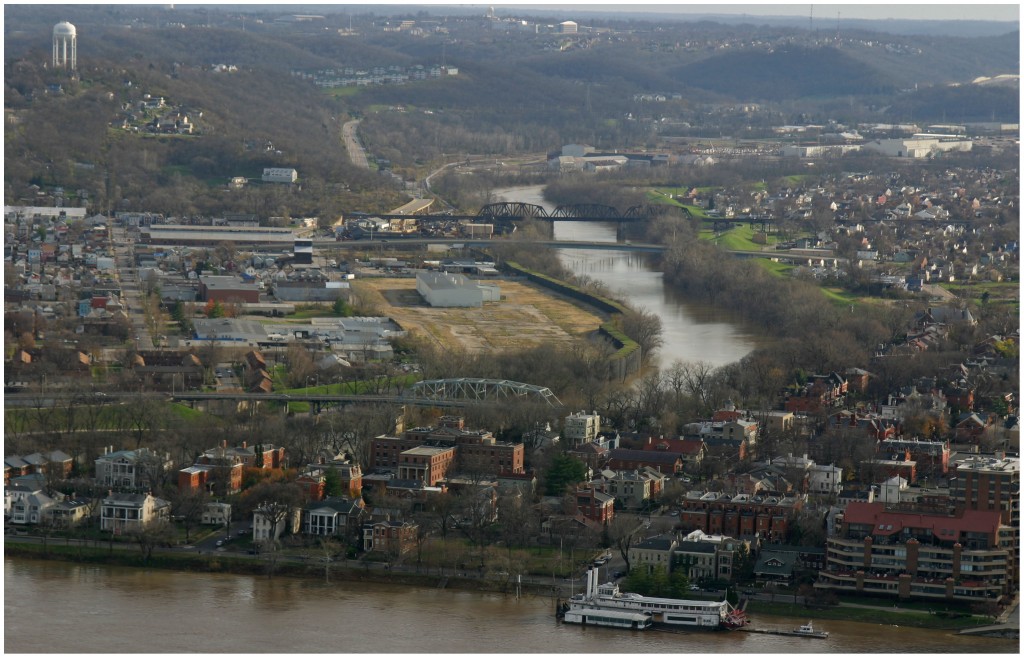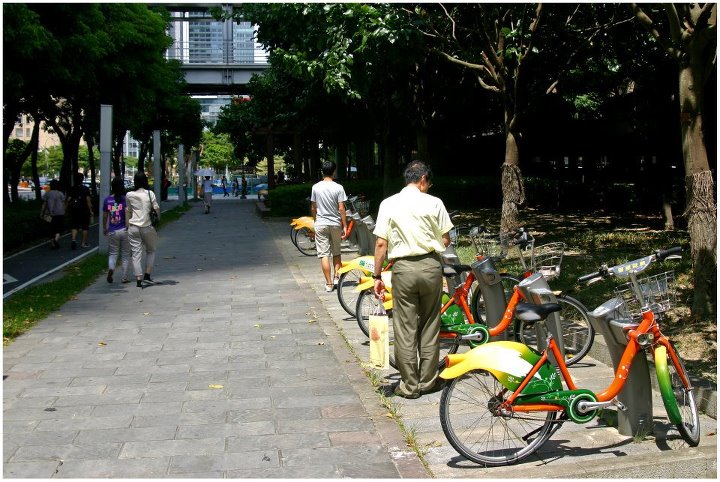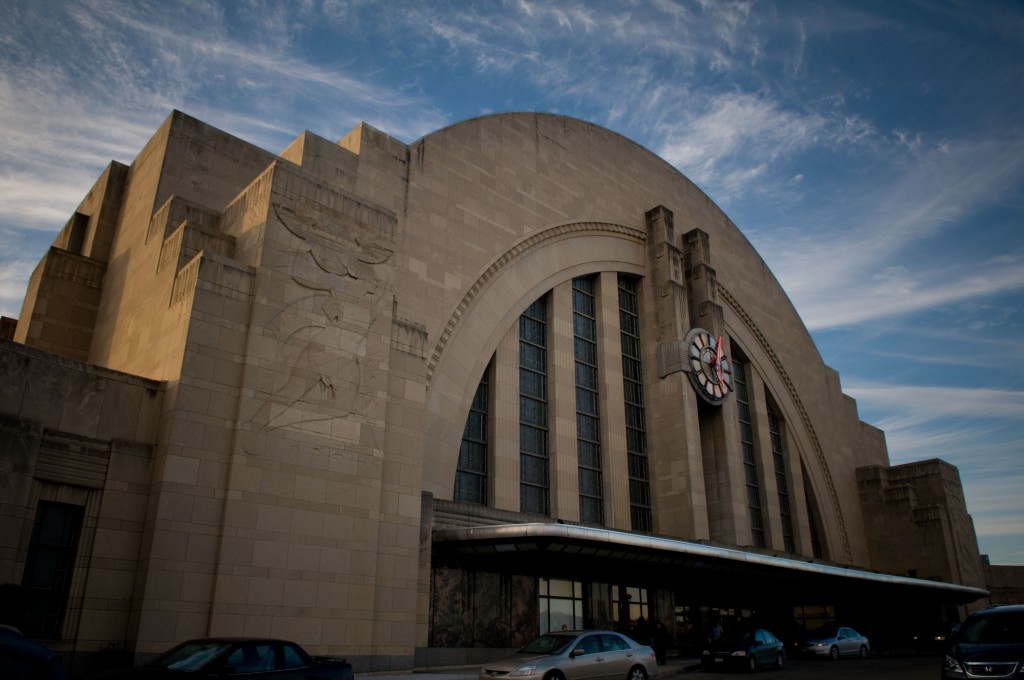The European-American Chamber of Commerce (EACC) will host its annual conference at the Hilton Netherland Plaza in downtown Cincinnati today. The goal of this year’s conference is to examine the best practices for recapitalizing America’s skilled workforce for global competitiveness.
While the discussion will be aimed at large economic trends, local business leaders see the conference as an opportunity to better position the Cincinnati region for additional foreign investment.
“While this conversation has been ongoing in our region, we are providing a platform for community stakeholders to connect and discuss how we can work to grow our skilled labor work force on both sides of the Atlantic,” EACC executive director Anne Capel stated.

Sites like the former Newport Steel property offer land for potential expansion of the region’s skilled labor workforce. Photograph by Randy A. Simes for UrbanCincy.
According to local business leaders, one of the ways in which the United States in general, and the Cincinnati region specifically, could improve is through better training and coordination between academic institutions and businesses.
“There is a great need for skilled manufactures like machinists and mechatronics,” explained HAHN Automation CEO, and EACC President, John Baines. “And a common complaint from European business leaders is that they can’t find this kind of talent.”
Baines went on to say that a key difference between Europe and the United States is the prevalence of apprenticeship programs. Such programs, he says, give Europeans a leg up in skilled manufacturing since, in some cases, people have been working in the fields since they were 13-years-old. Cincinnati-area business and community leaders are hoping that this year’s EACC conference will help change all that and close the gap between workforces.
“Skilled trade is a great way to go,” said Baines whose company opened its North American headquarters in Hebron, KY in 2001 and currently employs 50 people. “You are able to avoid debt by working while you study, and get both theoretical and practical experience.”
He says that the EACC is trying to encourage skilled manufacturing companies throughout the region to develop apprenticeship programs of their own, and hopes that academic institutions will stay up-to-date with technological advances and skills training needed by the industry.
The issue is so important to Baines and HANH Automation’s North American operations based out of Hebron, KY that he says the company is working on its own apprenticeship program that will hopefully be in place in no more than one to two years.
“I hope business leaders will walk away [from the conference] seeing the value in these apprenticeship programs,” Baines concluded. “It is important that community leaders appreciate the value of skilled labor and see it as a good career path. It’s a very respectable career with good pay, and an almost guaranteed job should you have the right training.”
The 2012 EACC Skilled Labor Workforce Conference will host more than 200 attendees today and will feature speakers from academic, public and private sectors. Keynote addresses will be given by Karen Eizey, director of the Skills for America’s Future program at The Aspen Institute, and Joerg Ernst, executive vice president of global business at Siemens AG.







